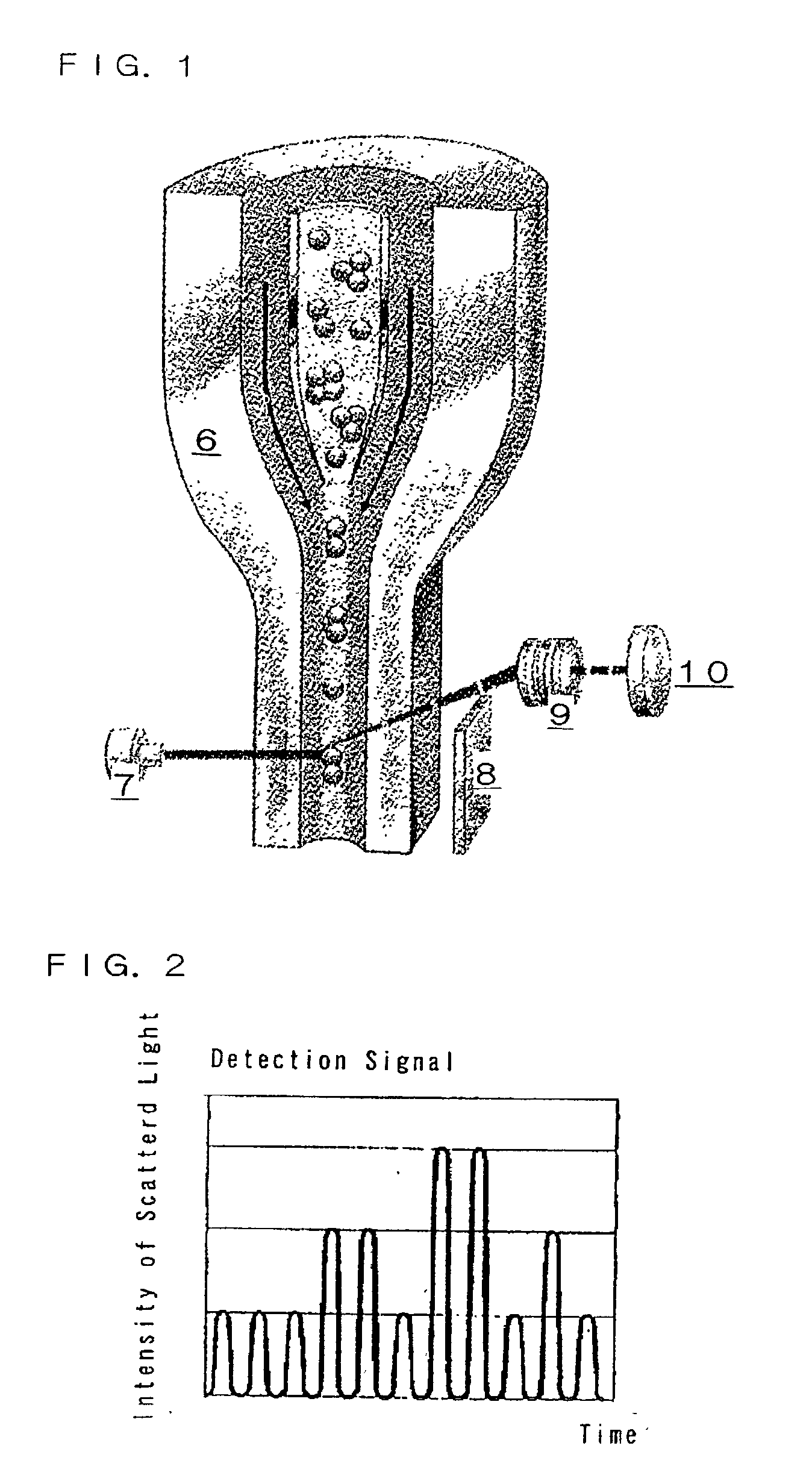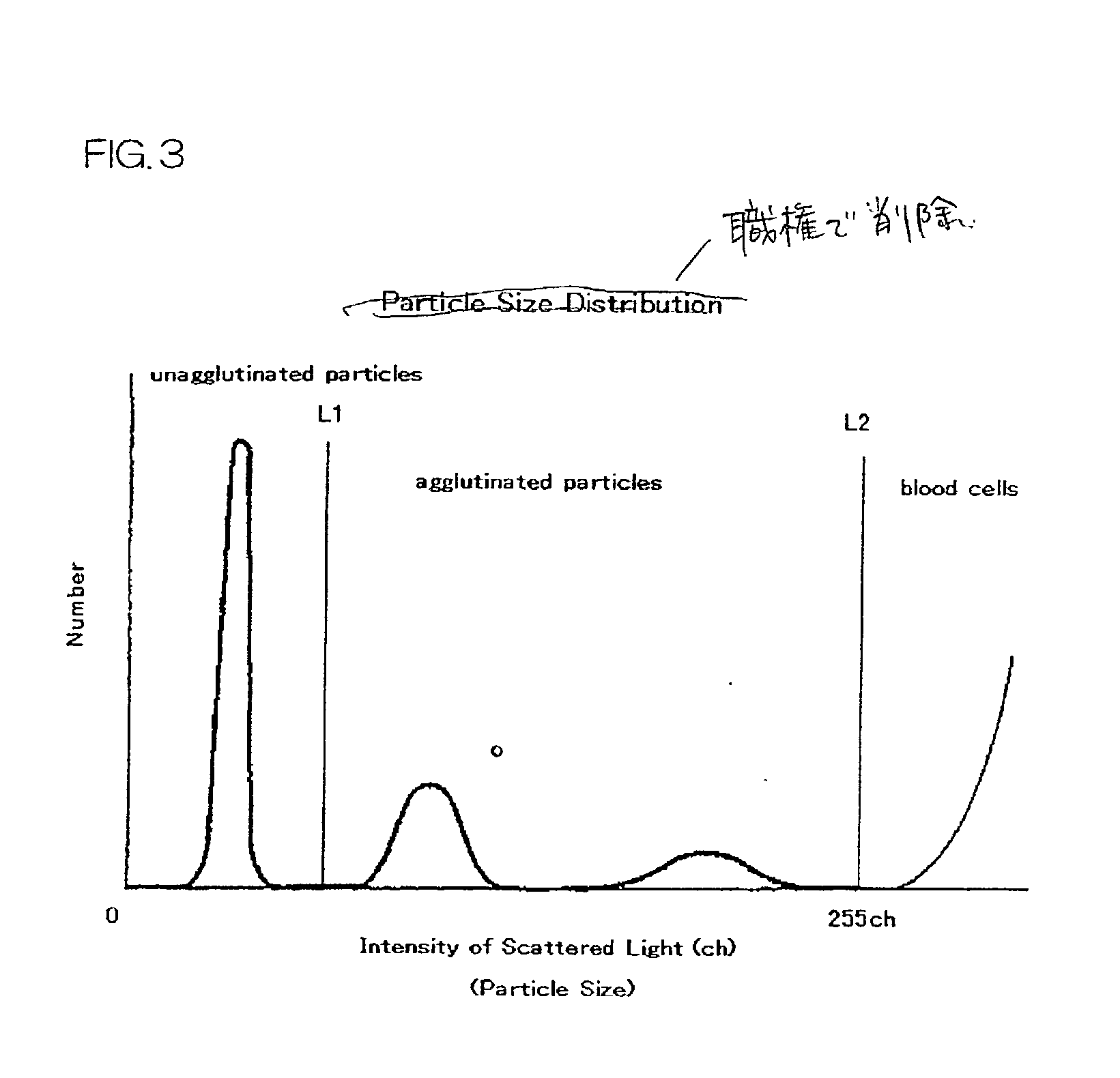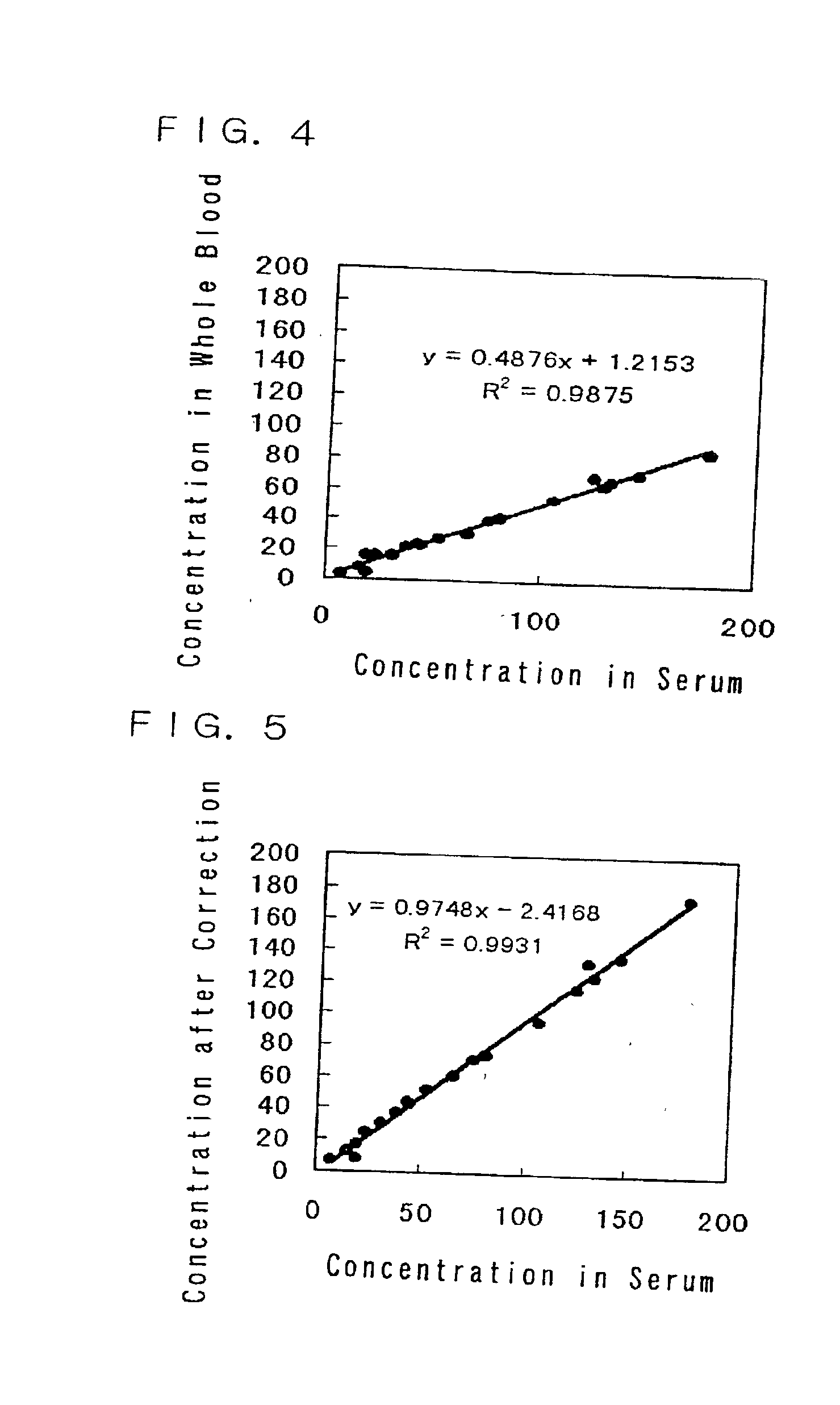Immunoassay and immunoassay apparatus
a technology which is applied in the field of immunoassay and immunoassay equipment, can solve the problems of limiting the accuracy of assay, requiring time and labor before the results of assays are obtained, and taking about 30 minutes to separate serum from whole blood, etc., and achieves simple correction of hematocrit content and high immunoassay accuracy.
- Summary
- Abstract
- Description
- Claims
- Application Information
AI Technical Summary
Benefits of technology
Problems solved by technology
Method used
Image
Examples
example 2
[0096] A whole blood sample was measured using PAMIA-50 (produced by Sysmex Corporation) as a measuring apparatus and RANREAM FRN (produced by Sysmex Corporation) as a measurement reagent. RANREAM FRN is a reagent kit for measuring ferritin (FRN) antigen and includes a latex reagent, a buffer, a sample diluent and a calibrator. The latex reagent is a 0.5% (w / v) suspension of 0.8 .mu.m polystyrene latex sensitized with an anti-FRN antibody.
[0097] The sample, 10 .mu.L, was mixed with 80 .mu.L of the buffer (pH6) and incubated at 45.degree. C. for a minute. The latex reagent sensitized with the anti-FRN antibody, 10 .mu.L, was added thereto to start the reaction at 45.degree. C.
[0098] About 20 seconds after the reaction was started, 19 .mu.L of the reaction mixture were added to 950 .mu.L of a sheath liquid into a 51-fold dilution. The diluted reaction mixture was introduced to an optical detector of PAMIA-50 to measure the agglutination degree P / T (%) (T1).
[0099] About 15 minutes afte...
example 3
[0109] A whole blood sample and a serum sample were measured using RANREAM HbsAg (produced by Sysmex Corporation) and PAMIA-50 (produced by Sysmex Corporation). RANREAM HbsAg and a latex reagent were the same as used in Example 1.
[0110] A calibrator was a solution containing a known concentration of HBsAg and was able to be handled as a serum sample.
[0111] Each sample, 10 .mu.L, was mixed with 80 .mu.L of the buffer (pH6) and incubated at 45.degree. C. for a minute. The latex reagent sensitized with the anti-HBs antibody, 10 .mu.L, was added thereto to start the reaction at 45.degree. C.
[0112] About 20 seconds after the reaction was started, 19 .mu.L of the reaction mixture were added to 950 .mu.L of a sheath liquid into a 51-fold dilution. The diluted reaction mixture was introduced to an optical detector of PAMIA-50 to measure the agglutination degree P / T (%) (T1).
[0113] About 15 minutes after the reaction was started, the agglutination degree P / T (%) (T2) was measured in the same...
example 4
[0119] The measurement was carried out on 21 whole blood samples including a sample with an abnormal MCV in the same manner as in Example 2. The MCV and Hct (hematocrit) values were obtained beforehand using a fully automated blood cell analyzer XE-2100 (produced by Sysmex Corporation).
[0120] The obtained measurements were handed as follows:
[0121] Not corrected (Conc. of FRN),
[0122] Corrected only with the number of blood cells (C.dbd.CO / (1-B / A)) (Corrected by blood number),
[0123] Corrected using the hematocrit value (C.dbd.CO / (1-Hct)) (Corrected by HCT),
[0124] Corrected with the MCV and the number of blood cells (C.dbd.CO / {1-(B / A).times.(MCV / D)}) (Corrected by MCV & blood number).
[0125] In this example, A was calculated to be 46000 from the correlation between the hematocrit value and the number of blood cells. D was set to 90.
[0126] The measurement results are shown in Table 5.
5 TABLE 5 Conc. In Whole blood of Corrected by FRN255 ch MCV & in Conc. or blood blood serum HCT MCV of F...
PUM
 Login to View More
Login to View More Abstract
Description
Claims
Application Information
 Login to View More
Login to View More - R&D
- Intellectual Property
- Life Sciences
- Materials
- Tech Scout
- Unparalleled Data Quality
- Higher Quality Content
- 60% Fewer Hallucinations
Browse by: Latest US Patents, China's latest patents, Technical Efficacy Thesaurus, Application Domain, Technology Topic, Popular Technical Reports.
© 2025 PatSnap. All rights reserved.Legal|Privacy policy|Modern Slavery Act Transparency Statement|Sitemap|About US| Contact US: help@patsnap.com



